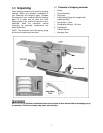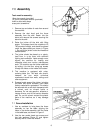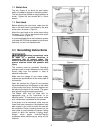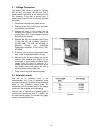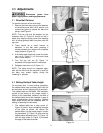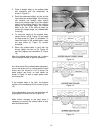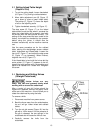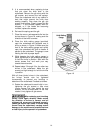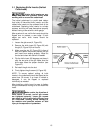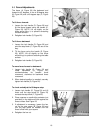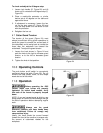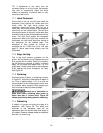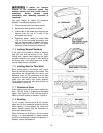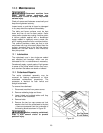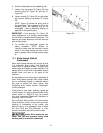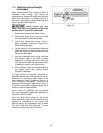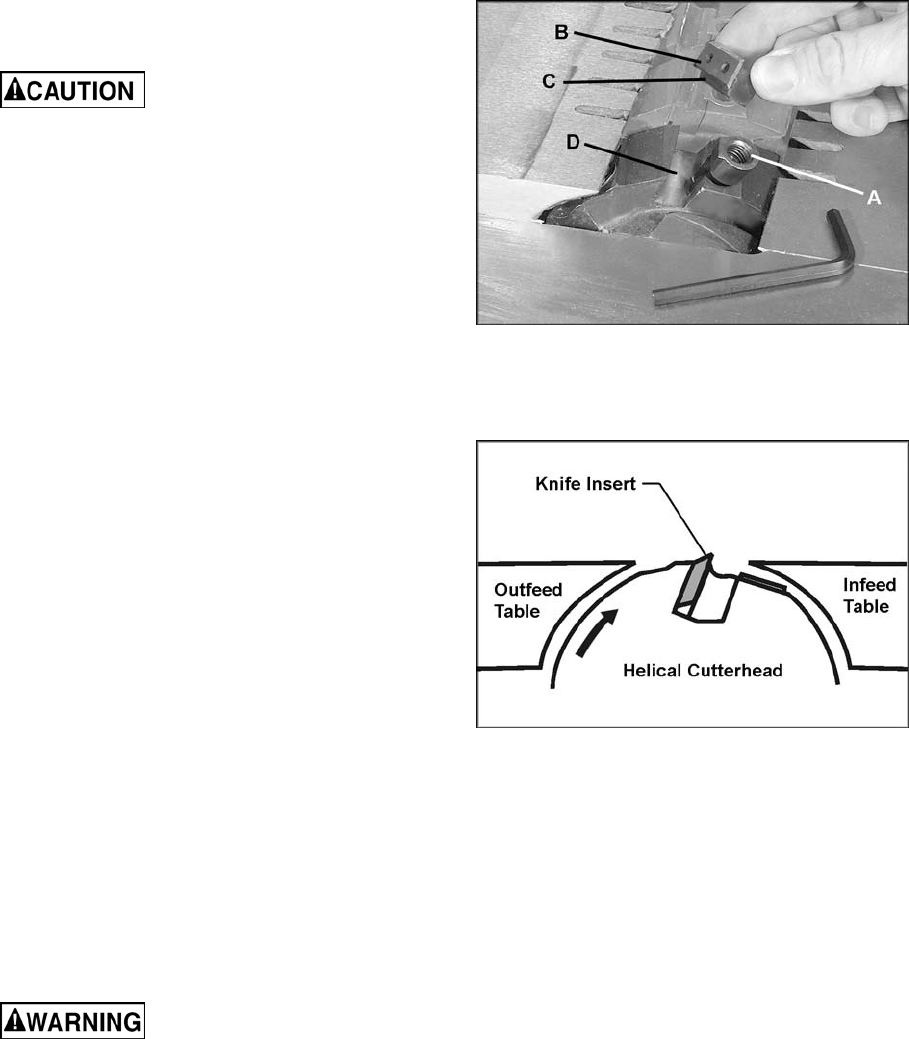
15
9.5 Replacing Knife Inserts (Helical
Cutterhead)
Jointer knife inserts are very
sharp. Use care and proceed slowly when
working with or around the cutterhead.
The helical cutterhead is a solid steel design
that holds 42 two-sided knife inserts, and two
rabbet knife inserts on the outboard end of the
cutterhead. Replacing knife inserts is a simple
process, and they will seat themselves properly
without having to be set with a knife gauge.
After a period of use, dull knife inserts should be
flipped over to present a new edge. If both
edges are worn, knife inserts should be
replaced.
1. Loosen the gib screw (A, Figure 20).
2. Remove the knife insert (B, Figure 20) with
the gib (C, Figure 20) from its slot.
3. Make sure the slot (D, Figure 20) is free of
dust and debris that would prevent the gib
and insert from seating properly. Wipe out
the slot and clean with solvent if needed.
4. Flip the knife insert 180 degrees and place it
onto the two pins of the gib. Make sure the
knife edge faces the proper direction (see
Figure 21).
5. Re-install the gib into the slot.
6. Firmly tighten the gib screw (A, Figure 20).
NOTE: To ensure optimal cutting, all knife
inserts in the cutterhead should be flipped at the
same time. Of course, if an insert is nicked or
damaged, it can be flipped or replaced
individually as needed.
After installing a knife insert, be sure to tighten
the gib screw before moving on to the next knife
insert.
Make certain the direction of
knife inserts is correct, and all gib screws
are tightened securely. Loose gib screws
can result in knife inserts being thrown from
the cutterhead, causing severe damage to
the machine and possible serious or fatal
injury to the operator or bystanders.
Figure 20
Figure 21



